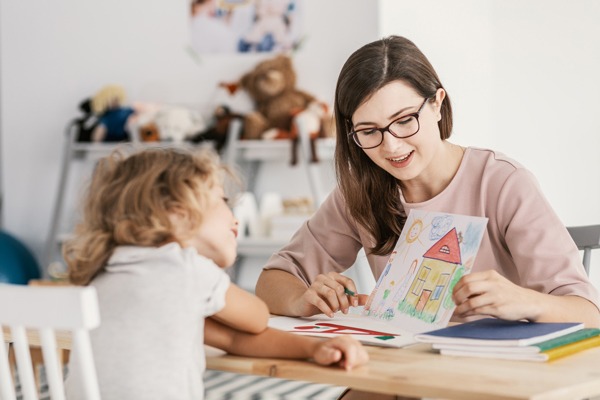As a new school year approaches, parents everywhere scramble to prepare for another year of academic growth and social opportunities. However, for a parent of a child with autism, there are often many extra obstacles to work through before sending their child off to school in the Fall. Let’s consider a few important things to do to prepare your child for a new school year.
Introduce your child to their teachers and classroom
If your child struggles with routines and expectations, preparing them for who they will be working with and what their class will be like can help ease their nerves and make for a smoother transition.
- Schedule a meet and greet (or two): If your child’s teacher and support staff can, request to meet during the Summer to allow your child to get to know them.
- Tour the classroom: As it gets closer to the new school year and teachers begin preparing their classrooms, request a tour of the classroom, so your child can begin to get acclimated to the setting. This will also allow for another opportunity to meet the teachers. Work with your child and their teachers to identify any areas of the classroom that may be sensory overload and identify safe spaces where they can take a break if needed.
- Create a social story: If your child benefits from social stories, create one written about their new teacher and classroom. You can include a picture of the teacher and information about their classroom, the daily routine, etc. Any information you have that may help them better prepare can be included in the story. Read this to your child daily, especially as it gets closer to the new school year. If your child is able to verbally respond to questions, have them reflect on the social story to show a level of understanding. Ask questions that are explained in the social story such as “what’s your teacher’s name?”, “when do you have art class?”, etc.

Get into a routine
It is so easy to get out of the school year routine. Once Summer starts, the days are sure to look a lot different. If you’re lucky, the family may sleep in a bit. Morning routines are no longer the same, there may be less structure, etc. It’s okay to allow for some change during the Summer. This may promote generalization and reduce the inflexible adherence to routines, which is a common feature of autism. However, as it gets closer to Fall, it will be helpful to get back into a daily routine that is similar to what to expect when school starts.
- Adjust bedtime and wake times: If your child’s sleep schedule has changed during the Summer, gradually adjust this by making small modifications each day until they are back to a school year sleep schedule. This may look like pushing bedtime up 5-10 minutes every day for two weeks, but should be individualized to whatever works best for your family. It’s important to keep the changes small and systematic, avoiding drastic changes such as moving bedtime up an hour or waiting to adjust bedtime until the new school year is starting.
- Create structure: School tends to be highly structured, which isn’t carried over to all families at home, especially during the Summer. If your child’s days have become much more relaxed, them to prepare by re-structuring the days. Visual schedules are a great way to help add a level structure to their day.
Provide social interactions
To prepare your child for the social aspects of school, practice going out into the community in spaces where other children of similar age are. If your child struggles with social settings, start small and work your way up. Perhaps a play date with a cousin or family friend to start with would be best.
Some other ideas for social opportunities include:
- Indoor playground
- Parks
- Special needs playgroups
- Fast food restaurant’s play place
- Museum or zoo
- The local library (some may have play groups or group reading times)
- Neighborhood children
Role-Play
Role-playing the expected behaviors and routines can help a child prepare for what’s to come. This can be done by first talking them through school routines, expected behaviors, morning routines before heading off to school, etc. Next, you would tell your child that you’re going to practice. Demonstrate the behaviors, then have them copy you. The more times you practice the expected behaviors, the more likely they will retain the information and be prepared to generalize the behaviors when school is ready to start.
Review their IEP
It may be beneficial to remind yourself of your child’s school goals, accommodations, etc. during the Summer. Reviewing the IEP is a great way to do so. Reviewing your child’s IEP during the Summer can help in a few ways.
- Identify goals to work on during the summer: Having your child’s goals fresh in your mind can help you to identify goals that you can work on with them during the Summer. Regression of skills is common with all children during the Summer months when formal teaching is not typically occurring. To avoid this, try engaging your child in activities that align with the goals they have in their IEP.
- Refresh your memory before the new school year: If your child’s last IEP meeting was several months ago, you may not remember all of the accommodations your child is required to be provided, what the goals are that they’re working on, etc. Knowing this information can help you go into the new school year prepared to advocate that they are receiving the supports needed to be successful.

Final Thoughts
Starting the school year off on the right foot can ease everyone’s nerves and make for an overall more successful year of enjoyable learning. Ensure your child is adequately prepared by trying some of the aforementioned strategies. It is never too early, nor too late to begin preparing for what’s to come this Fall.



